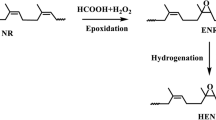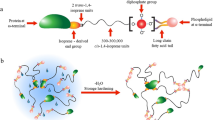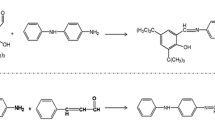Abstract
Natural rubber (NR) contains cis-1,4-polyisoprene and many kinds of non-rubber components, e.g., proteins, lipids and phospholipids, which are believed to affect the properties of NR. Oxidative degradation is one of the problems for rubber performance, which shorten the service life of the product. To overcome this problem, the influence of fatty acids and proteins on the cure properties, heat-ageing behaviours, and ozone resistance of NR vulcanizates were investigated. The peroxide vulcanization was chosen to avoid the effect of essential fatty acid and proteins. The purified NR, deproteinized NR (DPNR) and lipids-removed NR (LRNR) were mixed with model fatty acid (stearic acid) and amino acid (alanine). It was found that the cure behaviour of these mixed samples showed almost the same trend. After removing proteins, the rate of oxidative degradation was faster than that of the lipid-removal samples. Lower lipid content would result in less oxidative degradation of the rubber. These findings can infer that the endogenous proteins in NR act as natural antioxidants, while the endogenous lipids are pro-oxidants.







Similar content being viewed by others
References
Vaysse L, Bonfils F, Sainte-Beuve J, Cartault M (2012) Natural rubber. In: Matyjaszewski K, Möller M (eds) Polymer science: a comprehensive reference. Elsevier, Amsterdam, pp 281–293. https://doi.org/10.1016/B978-0-444-53349-4.00267-3
Murniati R, Sutisna WE, Rokhmat M, Iskandar F, Abdullah M (2017) Natural rubber nanocomposite as human-tissue-mimicking materials for replacement cadaver in medical surgical practice. ProcEng 170:101–107. https://doi.org/10.1016/j.proeng.2017.03.019
Furuya M, Shimono N, Okamoto M (2017) Fabrication of biocomposites composed of natural rubber latex and bone tissue derived from MC3T3-E1 mouse preosteoblastic cells. Nanocomposites 3(2):76–83. https://doi.org/10.1080/20550324.2017.1352111
Mohammadi H, Morovati V, Poshtan E, Dargazany R (2020) Understanding decay functions and their contribution in modelling of thermal-induced aging of crosslinked polymers. PolymDegrad Stab 175:109108. https://doi.org/10.1016/j.polymdegradstab.2020.109108
Celina MC (2013) Review of polymer oxidation and its relationship with materials performance and lifetime prediction. PolymDegrad Stab 98(12):2419–2429. https://doi.org/10.1016/j.polymdegradstab.2013.06.024
Li G-Y, Koenig J (2005) A review of rubber oxidation. Rubber ChemTechnol 78:355–390. https://doi.org/10.5254/1.3547888
Zhang B-L, Chen M, Ao N-J, Deng W-Y, Liu H-L (2004) Study on hot air aging and thermooxidative degradation of peroxide prevulcanized natural rubber latex film. J ApplPolymSci 92(5):3196–3200. https://doi.org/10.1002/app.20313
Čulin J, Gembarovski D, Andreis M, Veksli Z, Marinović T (2000) Effect of thermal oxidative ageing on the morphology of natural rubber networks as viewed by ESR. PolymInt 49(8):845–852. https://doi.org/10.1002/1097-0126(200008)49:8%3c845::AID-PI465%3e3.0.CO;2-O
Mei C, Yong-Zhou W, Guang L, Xiao-Ping W (2012) Effects of different drying methods on the microstructure and thermal oxidative aging resistance of natural rubber. J ApplPolymSci 126(6):1808–1813. https://doi.org/10.1002/app.34300
Samsuri AB, Abdullahi AA (2017) Degradation of natural rubber and synthetic elastomers. Reference module in materials science and materials engineering. Elsevier. https://doi.org/10.1016/B978-0-12-803581-8.09212-2
Fo G, Chazeau L, Chenal J-M, Schach R (2019) About thermo-oxidative ageing at moderate temperature of conventionally vulcanized natural rubber. PolymDegrad Stab 161:74–84. https://doi.org/10.1016/j.polymdegradstab.2018.12.029
Chandrasekaran VC (2010) Service life of rubber-lined chemical equipment. Rubber as a construction material for corrosion protection. Wiley, pp 235–248. https://doi.org/10.1002/9780470893197.ch15
Lee YH, Cho M, Nam J-D, Lee Y (2018) Effect of ZnO particle sizes on thermal aging behaviour of natural rubber vulcanizates. PolymDegrad Stab 148:50–55. https://doi.org/10.1016/j.polymdegradstab.2018.01.004
Bonfils F, Laigneau JC, Sylla S, Beuve JS (2001) DSC valuation of PRI of raw natural rubber. J ApplPolymSci 79(13):2354–2359. https://doi.org/10.1002/1097-4628(20010328)79:13%3c2354::AID-APP1044%3e3.0.CO;2-S
Nie S, Lacayo-Pineda J, Willenbacher N, Wilhelm M (2019) Aging of natural rubber studied via Fourier-transform rheology and double quantum NMR to correlate local chain dynamics with macroscopic mechanical response. Polymer 181:121804. https://doi.org/10.1016/j.polymer.2019.121804
Nun-anan P, Wisunthorn S, Pichaiyut S, Nathaworn CD, Nakason C (2020) Influence of non-rubber components on properties of unvulcanized natural rubber. PolymAdvTechnol 31(1):44–59. https://doi.org/10.1002/pat.4746
Sriring M, Nimpaiboon A, Kumarn S, Takahara A, Sakdapipanich J (2020) Enhancing viscoelastic and mechanical performances of natural rubber through variation of large and small rubber particle combinations. Polym Test 81:106225. https://doi.org/10.1016/j.polymertesting.2019.106225
Amnuaypornsri S, Sakdapipanich J, Toki S, Hsiao BS, Ichikawa N, Tanaka Y (2008) Strain-induced crystallization of natural rubber: effect of proteins and phospholipids. Rubber ChemTechnol 81(5):753–766. https://doi.org/10.5254/1.3548230
Zhou Y, Kosugi K, Yamamoto Y, Kawahara S (2017) Effect of non-rubber components on the mechanical properties of natural rubber. PolymAdvTechnol 28(2):159–165. https://doi.org/10.1002/pat.3870
Tuampoemsab S, Sakdapipanich J, Tanaka Y (2007) Influence of some non-rubber components on aging behavior of purified natural rubber. RubberChemTechnol 80(1):159–168. https://doi.org/10.5254/1.3548163
Tuampoemsab S, Sakdapipanich J (2007) Role of naturally occurring lipids and proteins on thermal aging behaviour of purified natural rubber. KautschGummiKunstst 60(12):678–684
Tuampoemsab S (2013) Influence of amino acids on anti-oxidative properties of green natural rubber and natural rubber compound. Adv Mater Res 747:664–667
Lhamo D, McMahan C (2017) Effect of protein addition on properties of guayule natural rubber. RubberChemTechnol 90(2):387–404. https://doi.org/10.5254/rct.17.83746
Kongkaew C, Intiya W, Loykulnant S, Sae-oui P (2017) Effect of protein crosslinking by Maillard reaction on natural rubber properties. KautschGummiKunstst 70:37–41
Wei Y-C, Liu G-X, Zhang H-F, Zhao F, Luo M-C, Liao S (2019) Non-rubber components tuning mechanical properties of natural rubber from vulcanization kinetics. Polymer 183:121911. https://doi.org/10.1016/j.polymer.2019.121911
Junkong P, Morimoto R, Miyaji K, Tohsan A, Sakaki Y, Ikeda Y (2020) Effect of fatty acids on the accelerated sulfur vulcanization of rubber by active zinc/carboxylate complexes. RSC Adv 10(8):4772–4785. https://doi.org/10.1039/C9RA10358A
Wei Y-C, Liu G-X, Zhang L, Xu W-Z, Liao S, Luo M-C (2020) Mimicking the mechanical robustness of natural rubber based on a sacrificial network constructed by phospholipids. ACS Appl Mater Interfaces 12(12):14468–14475. https://doi.org/10.1021/acsami.0c01994
Kruželák JN, Sýkora R, Hudec I (2014) Peroxide vulcanization of natural rubber. Part I: effect of temperature and peroxide concentration. J PolymEng. https://doi.org/10.1515/polyeng-2014-0034
Dluzneski PR (2001) Peroxide vulcanization of elastomers. Rubber ChemTechnol 74(3):451–492. https://doi.org/10.5254/1.3547647
Hasma H (1991) Lipids associated with rubber particles and their possible role in mechanical stability of latex concentrates. J Rubber Res 6(2):105–114
Liengprayoon S, Chaiyut J, Sriroth K, Fdr B, Jrm S-B, Dubreucq E, Vaysse L (2013) Lipid compositions of latex and sheet rubber from Hevea brasiliensis depend on clonal origin. Eur J Lipid SciTechnol 115(9):1021–1031. https://doi.org/10.1002/ejlt.201300023
Brzozowska J, Hanower P, Chezeau R (1974) Free amino acids of Hevea brasiliensis latex. Experientia 30(8):894–896. https://doi.org/10.1007/BF01938345
Yunyongwattanakorn J, Tanaka Y, Sakdapipanich J, Wongsasutthikul V (2008) Highly-purified natural rubber by saponification of latex: analysis of residual proteins in saponified natural rubber. RubberChemTechnol 81(1):121–137. https://doi.org/10.5254/1.3548192
Nawamawat K, Sakdapipanich JT, Ho CC (2010) Effect of deproteinized methods on the proteins and properties of natural rubber latex during storage. MacromolSymp 288(1):95–103. https://doi.org/10.1002/masy.201050212
Folch J, Lees M, Stanley GHS (1957) A simple method for the isolation and purification of total lipids from animal tissues. J BiolChem 226(1):497–509
Sakdapipanich J, Insom K, Phupewkeaw N (2007) Composition of color substances of Hevea brasiliensis natural rubber. RubberChemTechnol 80(2):212–230. https://doi.org/10.5254/1.3539403
Sriring M, Nimpaiboon A, Kumarn S, Sirisinha C, Sakdapipanich J, Toki S (2018) Viscoelastic and mechanical properties of large- and small-particle natural rubber before and after vulcanization. Polym Test 70:127–134. https://doi.org/10.1016/j.polymertesting.2018.06.026
John FP (1953) Principles of polymer chemistry, 1st edn. Cornell University Press, New York, p 29
Flory PJ (1950) Statistical mechanics of swelling of network structures. J ChemPhys 18:108–111. https://doi.org/10.1063/1.1747424
Smitthipong W, Tantatherdtam R, Rungsanthien K, Suwanruji P, Sriroth K, Radabutra S, Thanawan S, Vallat M-F, Nardin M, Mougin K, Chollakup R (2013) Effect of non-rubber components on properties of sulphur crosslinked natural rubbers. Adv Mater Res 844:345–348
Arnold AR, Evans P (1991) Role of fatty acids in autoxidation of deproteinized natural rubber. J Nat Rubber Res 6:75
Tuampoemsab S, Rattanapan A, Pakeyangkoon P (2014) Antagonism of natural anti- and pro-oxidants in synthetic polyisoprene rubber vulcanizates. Adv Mater Res 979:159–162
Acknowledgements
The authors gratefully acknowledge Royal Golden Jubilee for PhD. Program, and the Center of Excellence for Innovation in Chemistry (PERCH-CIC), Ministry of Higher Education, Science, Research and Innovation. Sincere appreciation is extended to the Thai Rubber Latex Group Public Co., Ltd. for supporting NR latex.
Funding
This work was supported by the Royal Golden Jubilee PhD. Program [grant numbers PhD/0150/2560], Ministry of Higher Education, Science, Research and Innovation.
Author information
Authors and Affiliations
Contributions
The manuscript was written through the contributions of all authors. All authors have approved the final version of the manuscript.
Corresponding author
Ethics declarations
Conflict of interest
The authors declare that they have no known competing financial interests or personal relationships which have or could be perceived to have influenced the work reported in this article.
Additional information
Publisher's Note
Springer Nature remains neutral with regard to jurisdictional claims in published maps and institutional affiliations.
Rights and permissions
About this article
Cite this article
Payungwong, N., Tuampoemsab, S., Rojruthai, P. et al. The role of model fatty acid and protein on thermal aging and ozone resistance of peroxide vulcanized natural rubber. J Rubber Res 24, 543–553 (2021). https://doi.org/10.1007/s42464-021-00100-z
Received:
Accepted:
Published:
Issue Date:
DOI: https://doi.org/10.1007/s42464-021-00100-z




